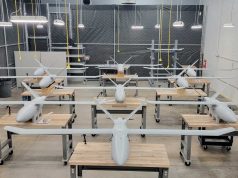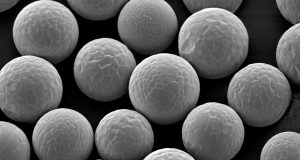The Naval Sea Systems Command (NAVSEA) has installed the Markforged X7 Field Edition 3D printer on the submarine USS New Hampshire (SSN 778) in the summer of 2022. A report from the Navy shows that the printer can be used successfully.
The printer, a Markforged X7 field edition, is a polymer-based additive manufacturing system capable of printing high-durability carbon fiber reinforced nylon. It was installed on USS New Hampshire in July 2022. As an additive manufacturing product, the 3D printer aids Sailors in maintaining forward deployment, by allowing crews to unconventionally repair items such as pipe leaks and enclosures for new electrics in real time, increasing self-sustainment abilities.
“3D printers provide the opportunity for creative problem solving. These devices lower the barrier for component manufacturing, empowering sailors to take ownership of their repairs, and to think outside the box,” said Capt. Bennett Christman, the commanding officer of USS New Hampshire. “Ingenuity and creative problem solving are core to our history as a submarine force. Fostering these values will pay dividends in the way Sailors approach all aspects of their jobs.”
The Markforged X7 3D printer was chosen due to its ability to remain reliable in a simulated shipboard environment. It is a product of the NAVSEA Additive Manufacturing Research and Development Program (NAVSEA 05T) with support from Naval Surface Warfare Center (NSWC) Philadelphia, NSWC Carderock, and Naval Undersea Warfare Center (NUWC) Newport.
“This system can be used to produce most of the currently approved Technical Data Packages that are available for Sailors on the Joint Technical Data Integration site,” said NAVSEA Additive Manufacturing Assistant Program Manager Lewis Shattuck. “These parts have been identified by NAVSEA engineers and the fleet to address a variety of needs including standard or preventative maintenance, temporary replacements, quality of life products, drill props, tools and fixturing.”
The USS New Hampshire reported that although the crew did not receive in-person training on the Markforged X7 printer, the documentation for the printer was excellent and crew members experienced in 3D printing were able to learn and train other crew members.
Engineers from NUWC Newport, NSWC Philadelphia and NSWC Carderock combined lessons learned from previous 3D printer installs with the Markforged X7 to produce detailed instructions. The instructions enable Sailors to independently setup the printer, print parts, perform general maintenance and calibration, as well as troubleshoot problems.
“One of the most important factors when developing the documentation was having personnel with varying degrees of additive manufacturing experience working through each step described by the original equipment manufacturer and then adding updates, comments and more details with pictures when available,” said Shattuck.
NAVSEA 05T, with support from engineers at NSWCs Carderock and Philadelphia, NUWC Newport, and Johns Hopkins Applied Physics Laboratory, has installed additive manufacturing equipment aboard nine surface ships, including three aircraft carriers, and helped to inform the kit-based solution for additive manufacturing aboard four submarines.
With additive manufacturing mentioned in the NAVSEA Campaign Plan mission priority to “Transform Digital Capacity,” the first metal 3D printer was permanently installed aboard a naval surface ship, USS Bataan (LHD 5), late last year. Additive manufacturing programs are expected to continue to grow.
“The Afloat Additive Manufacturing Program will become an acquisition program of record in fiscal year 2024, under which the current plan is to more widely deploy the latest configurations of additive manufacturing equipment, with the selection of metal, polymer, or both depending on the particular ship platform,” said NAVSEA 05T Afloat R&D Lead Shaun Verrinder.
NAVSEA Chief Engineer and Deputy Commander for Ship Design, Integration and Naval Engineering (SEA 05) Rear Adm. Jason Lloyd and his team’s work supports the campaign plan’s call to embrace additive manufacturing as a driver to enhance warfighting capabilities, increase readiness, accelerate capability development and improve sustainment of Navy systems.
“The team continues to make progress and we have made significant strides in additive manufacturing that are proving to be very beneficial,” said Lloyd. “There is still a lot of work to do in the field, particularly the ubiquitous use of AM for metal construction and repairs.”
Subscribe to our Newsletter
3DPResso is a weekly newsletter that links to the most exciting global stories from the 3D printing and additive manufacturing industry.























